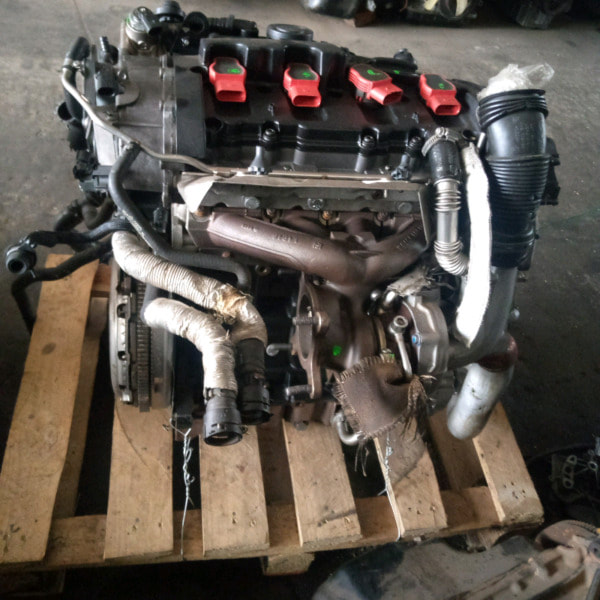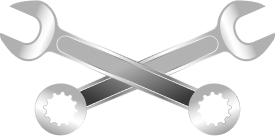2.0 TSI/TFSI EA113 Engine: Specifications, Applications, and FAQs
The 2.0 TSI/TFSI EA113 engine, developed by the Volkswagen Group, is one of the most recognized turbocharged inline-four petrol engines in the automotive world. Known for its performance, efficiency, and widespread use across VW, Audi, SEAT, and Škoda vehicles, the EA113 belongs to the EA113 engine family, which served as a cornerstone for Volkswagen’s performance-oriented lineup throughout the 2000s and early 2010s.
This engine is most famously remembered for its role in hot hatches like the VW Golf GTI Mk5, Audi S3, and SEAT Leon Cupra, offering an impressive balance between power delivery and everyday drivability.

2.0 TSI/TFSI EA113 Engine
Technical Specifications of the 2.0 TSI/TFSI EA113 Engine
| Specification | Details |
|---|---|
| Engine Code Examples | AXX, BWA, BPY, BHZ, CDL, BGB, BPG |
| Configuration | Inline-4, DOHC, 16-valve |
| Fuel System | Direct Fuel Injection (FSI) |
| Aspiration | Turbocharged (K03 or K04 depending on version) |
| Displacement | 1,984 cc (2.0 L) |
| Bore x Stroke | 82.5 mm × 92.8 mm |
| Compression Ratio | 10.3:1 (varies slightly by version) |
| Block Material | Cast iron |
| Head Material | Aluminum alloy |
| Induction | Single turbocharger with intercooler |
| Fuel Type | Petrol (minimum RON 95, recommended RON 98 for performance models) |
| Power Output | 200–272 hp (depending on engine code and vehicle) |
| Torque | 280–350 Nm |
| Timing | Belt-driven DOHC with variable intake camshaft timing |
| Emission Standard | Euro 4 – Euro 5 (varies by market and year) |
Key Features of the EA113 2.0 TSI/TFSI
-
Turbocharging: K03 turbo in standard GTI models; upgraded K04 turbo in higher-performance models like the Audi S3 (265 hp) and Golf R (270 hp).
-
Direct Injection: Advanced Fuel Stratified Injection (FSI) system improves fuel efficiency and performance.
-
Strong Tuning Potential: Capable of supporting 350–400+ hp with upgraded turbos, intercoolers, and fueling.
-
Iron Block Durability: Unlike the newer EA888 engines, the EA113 uses a cast-iron block, which provides high strength under increased boost.
-
Performance Pedigree: Featured in some of the most popular hot hatches and performance sedans of the 2000s and 2010s.
Vehicles Using the 2.0 TSI/TFSI EA113 Engine
The EA113 2.0 TSI/TFSI was used widely across Volkswagen Group brands. Below is a list of vehicles where this engine was applied:
Volkswagen
-
Golf Mk5 GTI (AXX, BWA – 200 hp)
-
Golf Mk6 R (CDL – 270 hp)
-
Passat B6 2.0 TFSI (BWA, BPG – 200 hp)
-
Scirocco R (CDL – 265 hp)
Audi
-
Audi A3 2.0 TFSI (AXX, BWA – 200 hp)
-
Audi S3 (BHZ, CDL – 265 hp)
-
Audi TT Mk2 2.0 TFSI (BWA, BGB – 200 hp)
-
Audi TTS (CDL – 272 hp)
SEAT
-
SEAT Leon FR (BWA – 200 hp)
-
SEAT Leon Cupra Mk2 (BHZ – 240 hp)
-
SEAT Leon Cupra R (CDL – 265 hp)
Škoda
-
Octavia vRS Mk2 (BWA – 200 hp)
Common Issues with the EA113 Engine
While highly regarded, the EA113 2.0 TSI/TFSI engine is not without problems. Some common issues include:
-
Carbon Build-up on Intake Valves – due to direct injection design.
-
High-pressure Fuel Pump (HPFP) Cam Follower Wear – a well-known failure point.
-
Timing Belt Maintenance – requires periodic replacement (~60,000–80,000 miles).
-
PCV Valve and Diverter Valve Failures – can cause boost leaks.
-
Oil Consumption – some versions prone to higher than usual oil use.
With proper maintenance and preventive upgrades, these engines can reliably handle both stock and tuned setups.
FAQs About the 2.0 TSI/TFSI EA113 Engine
1. What is the difference between the EA113 and EA888 engines?
The EA113 has a cast-iron block and belt-driven camshaft, making it more robust for high-power tuning. The newer EA888 features an aluminum block, chain-driven timing, and more efficiency-focused engineering.
2. How much horsepower can the EA113 2.0 TSI handle with stock internals?
With proper tuning, the stock internals can handle 350–380 hp reliably. Beyond that, forged pistons and rods are recommended.
3. Is the EA113 reliable?
Yes, with regular maintenance and attention to known weak points (like HPFP cam followers and timing belts), the EA113 can be very reliable and long-lasting.
4. What fuel should I use for the 2.0 TFSI EA113?
Premium unleaded fuel with RON 98 (or 93 AKI in North America) is recommended, especially for turbocharged high-output models.
5. Which EA113 engine code is the most powerful?
The CDL engine code, used in the Golf R, Audi S3, and Scirocco R, is the most powerful factory EA113 variant, producing up to 270–272 hp.
6. How often should the timing belt be changed?
It is recommended to replace the timing belt every 60,000–80,000 miles (100,000–120,000 km) to avoid engine damage.
7. Can I upgrade the turbocharger on an EA113 engine?
Yes. Many owners upgrade from the smaller K03 to a K04 turbo, or even go for big turbo kits capable of 400+ hp.
Conclusion:
The 2.0 TSI/TFSI EA113 engine remains a legendary powerplant in Volkswagen Group’s history. With its strong cast-iron block, excellent tuning potential, and application in iconic performance vehicles, it continues to be a favorite among enthusiasts. While it has some known reliability issues, enthusiasts still seek it out for its combination of durability, power, and driving excitement.




